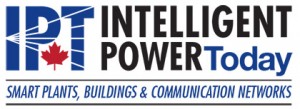Communication Protocols and Remote Monitoring
Ground Fault Protection (GFP) systems are vital for safeguarding electrical networks by detecting and isolating circuits experiencing leakage currents (ground faults). Traditionally, managing GFP systems has relied on manual checks and local data acquisition. However, advancements in communication protocols and remote monitoring capabilities are transforming how GFP systems are managed, facilitating proactive maintenance and improved system efficiency. This article explores the potential of communication protocols and remote monitoring for enhancing Ground Fault Protection system management.
The Role of Communication Protocols
Communication protocols are the backbone of modern ground fault protection systems, facilitating the exchange of information between devices and control systems.
Standardization and Compatibility
The adoption of standardized communication protocols ensures compatibility between different devices and systems, allowing for seamless integration and information exchange within the ground fault protection framework.
Data Transmission Efficiency
Efficient communication protocols enable the rapid transmission of data, ensuring that ground fault information is relayed promptly to control centers for immediate action, thus minimizing potential damage.
Advantages of Remote Monitoring
Remote monitoring leverages these communication protocols to provide real-time oversight of ground fault protection systems, offering numerous benefits.
Real-Time Data Acquisition
Remote monitoring systems continuously collect and transmit data, providing a comprehensive view of the electrical network's status and enabling timely detection of ground faults.
Fault Location Identification
Advanced remote monitoring systems can precisely identify the location of a ground fault within the network, significantly reducing the time and effort required for troubleshooting and repairs.
Proactive Maintenance and Diagnostics
Remote diagnostics facilitate the early detection of potential issues, allowing for proactive maintenance and reducing the likelihood of unexpected system failures.
Enhancing System Management through Technology
The integration of communication protocols and remote monitoring technologies enhances ground fault protection system management in several key areas.
Improved System Reliability
Real-time monitoring and rapid communication of ground fault incidents ensure that protective measures can be activated immediately, improving the overall reliability of the electrical system.
Operational Efficiency
The ability to monitor and manage ground fault protection systems remotely increases operational efficiency, reducing the need for physical inspections and manual data collection.
Cost Savings
Proactive maintenance and the early detection of faults can prevent costly repairs and downtime, leading to significant cost savings over time.
Challenges and Future Directions
While the benefits are clear, there are challenges to implementing these technologies in ground fault protection systems, which must be addressed to fully realize their potential.
Cybersecurity Concerns
The increased connectivity and data exchange raise concerns about cybersecurity. Robust security measures are essential to protect against unauthorized access and data breaches.
Technological Complexity
The complexity of these systems requires skilled personnel for installation, operation, and maintenance, underscoring the need for ongoing training and development.
Future Innovations
Continued technological advancements are expected to further enhance the capabilities of communication protocols and remote monitoring systems, offering even greater precision, efficiency, and reliability in ground fault protection.
The integration of advanced communication protocols and remote monitoring in ground fault protection systems represents a significant step forward in electrical safety and system management. By providing real-time data acquisition, precise fault location, and enhanced diagnostics, these technologies enable more proactive and efficient management of ground fault protection systems. Despite the challenges, the ongoing evolution of these technologies promises to further improve the safety, reliability, and efficiency of electrical networks worldwide.
